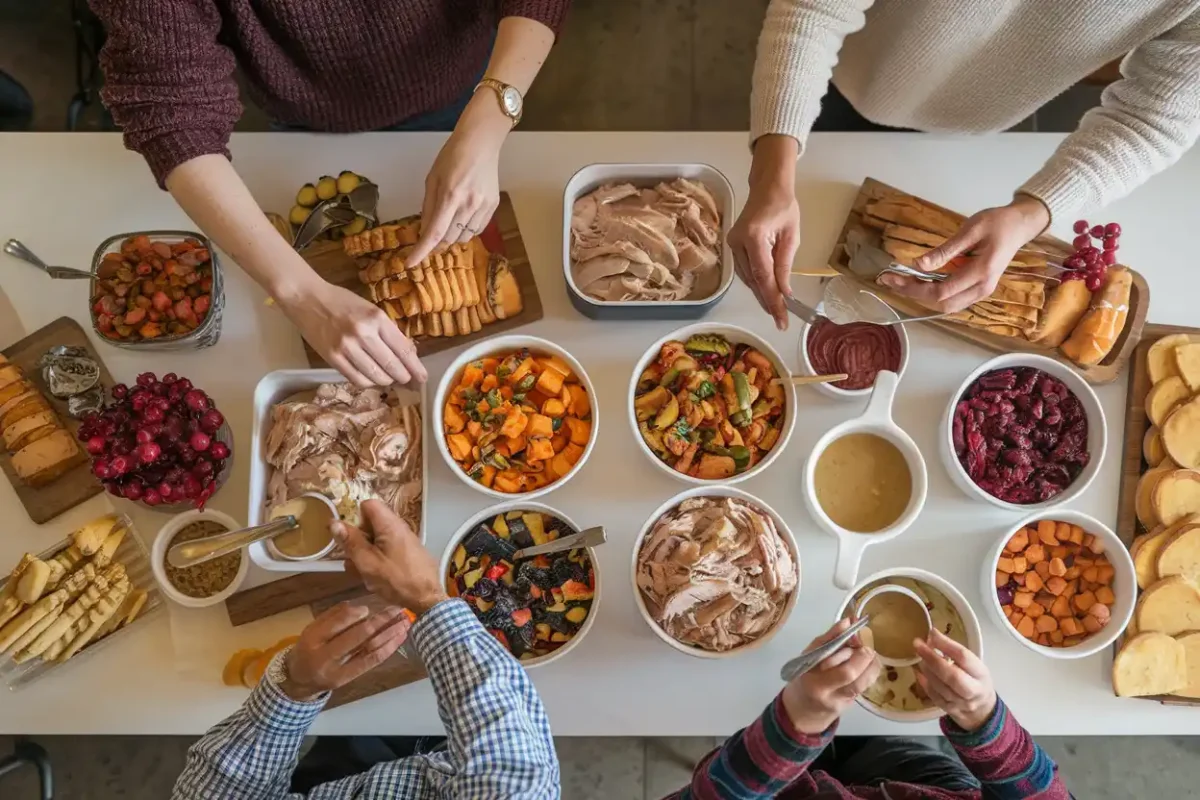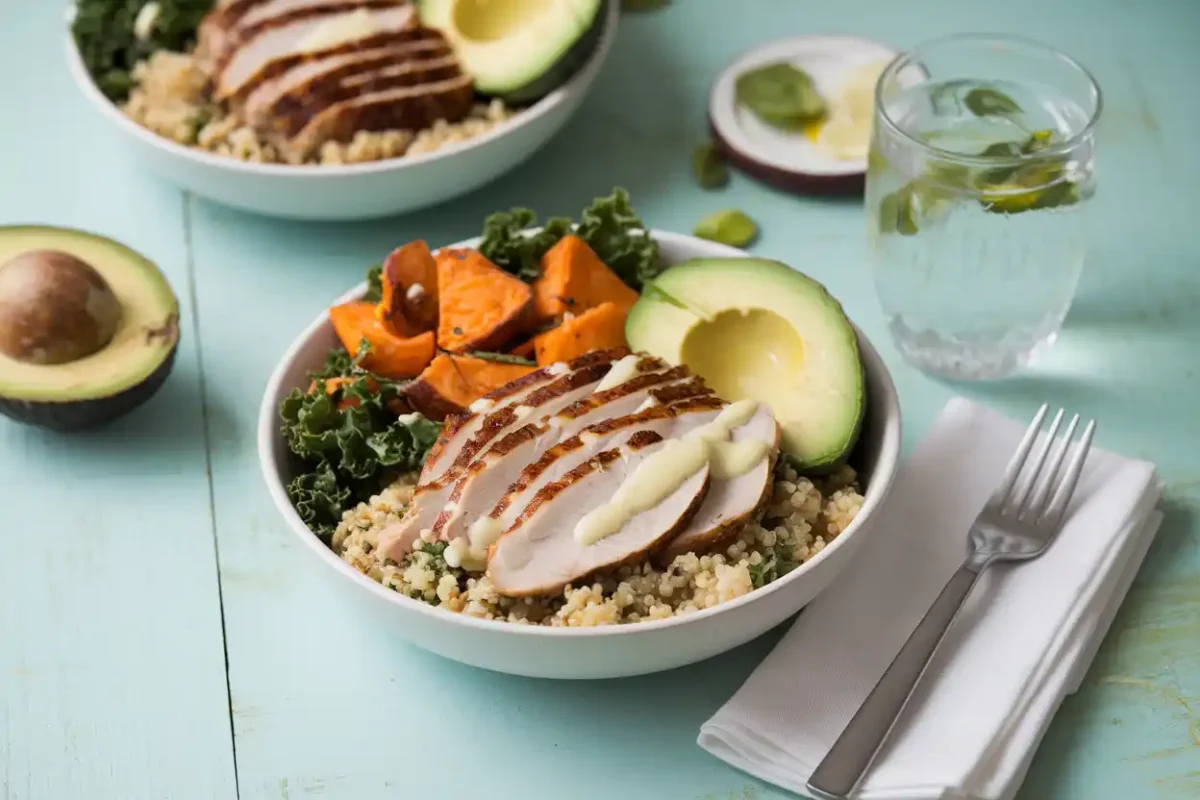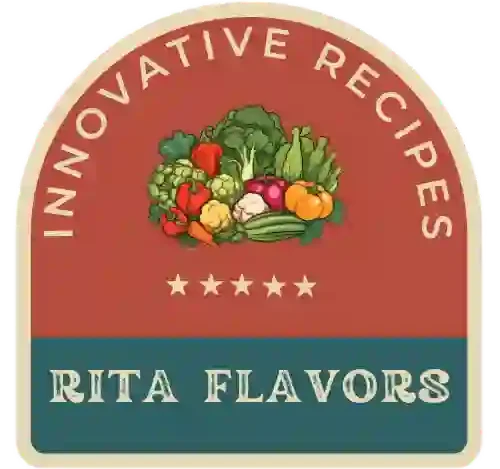Turkey Bowls
If you’ve ever heard people talking about playing football on Thanksgiving morning, they were probably talking about a Turkey Bowl Tradition. This annual tradition has become a staple in many families and communities across the U.S. It’s a fun, often casual, sometimes competitive football game played on or around Thanksgiving Day.
But what makes it so special? Why do people love it so much? Well, for starters, it’s not just about football—it’s about family, food, and fun. It’s a way to burn some calories before indulging in turkey, stuffing, and pumpkin pie. For many, it’s as much a part of Thanksgiving as watching the Macy’s Thanksgiving Day Parade or sitting down for a big feast.
History and Origins of the Turkey Bowl Tradition
The Tradition of Thanksgiving Football Games
The Turkey Bowl Tradition traces its roots back to early Thanksgiving football games, which became popular in the late 19th and early 20th centuries. The very first recorded Thanksgiving football game was played in 1876 between Yale and Princeton. As football became a bigger part of American culture, it made its way into communities, families, and schools.
How Turkey Bowls Became a National Phenomenon
Over time, people started organizing informal, local football games on Thanksgiving morning, calling them “Turkey Bowls.” These games became more than just casual backyard matches—they turned into yearly traditions passed down through generations. Today, some Turkey Bowls are large, organized events with dozens of players, while others remain simple, no-rules, fun games among family members.
Evolution of Turkey Bowls Over the Years
From school football teams to professional athletes, the Turkey Bowl Tradition has evolved. High schools often hold Turkey Bowl rivalries, and some neighborhoods even have formal leagues. Meanwhile, charity organizations have turned these games into fundraising events, adding another layer of meaning to the tradition.
Types of Turkey Bowls
Informal Backyard Turkey Bowls
This is the most common type of Turkey Bowl. Friends and family gather at a local park or backyard, split into teams, and play for fun. There are usually no referees, official rules, or uniforms—just pure enjoyment and maybe some friendly trash talk.
Competitive Local and Community Tournaments
In many towns, the Turkey Bowl Tradition is taken to the next level. Community centers, churches, and local organizations host official tournaments with set rules, referees, and even trophies. Some of these games raise money for local charities, making them a mix of fun and goodwill.
High School and College Turkey Bowls
Many high school football teams play rivalry games on Thanksgiving or the day before. These are often called “Turkey Bowls” and bring out huge crowds of alumni, students, and families. Some college teams also participate in Thanksgiving football games, though the focus is more on professional matchups.
Professional and Charity Turkey Bowl Events
Some former professional football players organize charity Turkey Bowls to raise funds for good causes. These events often include celebrity appearances, prize giveaways, and media coverage, making them an exciting part of Thanksgiving festivities.
Conclusion
The Turkey Bowl Tradition is more than just a football game—it’s an experience that brings people together. Whether you’re playing in a backyard or a big stadium, the joy of the game remains the same. In the next part of this article, we’ll dive into the rules, gameplay, and tips for organizing your own Turkey Bowl. Stay tuned!
Rules and Gameplay of a Turkey Bowl
Standard Rules for a Casual Turkey Bowl
The beauty of a Turkey Bowl Tradition is that the rules can be as relaxed or structured as you want. However, most casual games follow some basic guidelines:
- Number of Players: Typically, teams consist of 5 to 11 players, but you can adjust based on the number of participants.
- Field Size: If playing in a backyard or park, teams often use cones or markers to create an unofficial field.
- Game Length: Some games are played in two halves (15-30 minutes each), while others play until a set score is reached.
- Scoring: Touchdowns are usually worth 6 points, and extra points can be played as 1 or 2 points depending on distance.
- No Tackling (Optional): Many casual Turkey Bowls are played as touch or flag football to avoid injuries.
Variations in Rules Across Different Events
Because Turkey Bowls are played in different settings, the rules often vary:
- Backyard Turkey Bowls: Usually no referees, no official downs, and a “play until you’re tired” approach.
- Community & Charity Games: These may have structured rules, referees, and official team rosters.
- High School & College Games: More formal, often played under standard football rules.
Common Strategies and Tactics Used in Turkey Bowls
Even though it’s just for fun, having a game plan can give your team an edge. Here are some common strategies:
- Quick Passes: Since most players aren’t professional athletes, short and simple passes work better than deep throws.
- Spread Formation: Spacing out players allows for more open passes and fewer interceptions.
- Dual Quarterback Play: If allowed, using two quarterbacks for lateral passes can confuse defenders.
- Blitz Timing: In games that allow rushing the quarterback, timing your blitz correctly can lead to a quick sack.
Common Problems in Turkey Bowls (And How to Solve Them)
Weather Challenges: Dealing with Cold or Rain
Since Thanksgiving falls in late November, cold temperatures, rain, or even snow can be an issue. Here’s how to handle it:
- Wear Layers: Use sweat-wicking base layers and gloves for better grip.
- Use a Water-Resistant Football: A wet football can be hard to throw, so consider a grip-enhanced or waterproof ball.
- Choose the Right Footwear: Cleats or turf shoes work best to prevent slipping on wet grass.
Injuries and Safety Precautions
Even in casual games, injuries can happen. To keep everyone safe:
- Play Touch or Flag Football: This reduces the risk of collisions and injuries.
- Warm-Up Before Playing: Stretching and light jogging help prevent muscle strains.
- Use Soft Field Markers: Avoid using hard objects like rocks or bricks to mark the field.
Team Imbalances and How to Make Fair Teams
No one likes a lopsided game where one team dominates. To make teams fair:
- Draft Players: Have two captains take turns picking players.
- Mix Experience Levels: Pair younger players with experienced ones.
- Rotate Players: If one team is winning easily, swap players to balance the game.
Lack of Equipment: DIY Solutions
Don’t have a football or goal markers? No problem! Here are some quick fixes:
- No Football? Use any round or oval ball that can be thrown.
- No Cones? Use backpacks, water bottles, or jackets to mark the field.
- No Jerseys? Have one team wear dark shirts and the other wear light shirts.
How to Organize Your Own Turkey Bowl

Choosing the Right Location and Time
Finding the perfect spot is key to a great game. Here’s what to consider:
- Local Parks: Many parks have open fields that are perfect for a game.
- School Fields: Some schools allow community games if you get permission.
- Backyards: If space allows, a backyard Turkey Bowl can be just as fun.
Setting Up Teams and Rules
Decide early on whether you want a casual game or a more structured competition. Things to establish beforehand:
- Number of Players: More than 10 players? Consider rotating teams.
- Game Duration: A set time limit (e.g., 30 minutes per half) keeps the game organized.
- Referee or Honor System: Decide if you need an official referee or if players will call their own fouls.
Ensuring Safety and Fun for Everyone
The goal of a Turkey Bowl is to have fun. Here are some ways to keep it enjoyable for all:
- Encourage All Ages to Play: Have different sections for kids and adults.
- Respect Each Other: No tackling or aggressive behavior.
- Bring Extra Gear: Have spare footballs, water bottles, and gloves in case someone forgets theirs.
Getting the Community Involved
A Turkey Bowl can be more than just a game—it can bring the whole community together. Consider:
- Inviting Local Businesses: Some companies might sponsor or donate snacks.
- Making It a Charity Event: Charge a small entry fee and donate proceeds to a local food bank.
- Creating T-Shirts or Awards: Simple medals or shirts make the event more memorable.
Conclusion
The Turkey Bowl Tradition is about more than just football—it’s about bringing people together, staying active, and making Thanksgiving even more special. Whether you play with family in the backyard or join a competitive local tournament, the memories you create will last a lifetime.
In the final part of this article, we’ll cover the best gear, famous Turkey Bowls, fun variations, and expert tips for winning. Stay tuned!
Best Gear and Equipment for a Turkey Bowl
Essential Equipment for a Successful Game
To make your Turkey Bowl Tradition as fun and smooth as possible, having the right gear is key. Here’s what you need:
- Football: Choose a high-quality football with good grip, especially if playing in cold or wet conditions.
- Cones or Markers: Use cones, flags, or any visible objects to mark the field boundaries.
- Scoreboard or Timer: A phone timer or whiteboard can help keep track of the score and game time.
- Flags (for Flag Football): If you’re playing flag football, you’ll need flag belts for each player.
- Water Bottles and Snacks: Keep everyone hydrated and energized throughout the game.
Recommended Clothing for Different Weather Conditions
Since Turkey Bowls happen in late November, the weather can be unpredictable. Here’s how to dress appropriately:
| Weather | Recommended Clothing |
|---|---|
| Cold and Dry | Thermal base layers, gloves, beanie, and cleats for traction. |
| Wet and Rainy | Waterproof jacket, gloves with good grip, and synthetic clothing. |
| Warm and Sunny | Breathable T-shirt, shorts, sunglasses, and plenty of water. |
Best Footballs for Turkey Bowl Games
Choosing the right football makes a huge difference. Here are some great options:
- Wilson NFL Super Grip Football: Excellent grip and durability for casual games.
- Under Armour 495 Football: Great for cold weather with its enhanced grip.
- NERF Weather Blitz Football: Perfect for younger players or rainy conditions.
Famous and Popular Turkey Bowl Games

Notable High School and College Turkey Bowls
Many high schools across the U.S. hold annual Turkey Bowl games, often featuring long-standing rivalries. These games draw huge crowds and sometimes even alumni who return to watch.
Celebrity and Charity Turkey Bowl Events
Several NFL players and celebrities host Turkey Bowl Tradition events to raise money for charities. These games include pro athletes, actors, and local sports legends, making them exciting to watch.
Iconic NFL Thanksgiving Games
While not technically Turkey Bowls, the NFL’s Thanksgiving Day games have become a tradition for football fans. The Dallas Cowboys and Detroit Lions are known for playing every year, creating a holiday spectacle.
Fun Variations of Turkey Bowls
Flag Football Turkey Bowls
If you want to avoid injuries, flag football is a great alternative. Players wear flags on their belts, and instead of tackling, the defense must pull off a flag to stop the play.
Touch Football vs. Tackle Football
Depending on the group, Turkey Bowls can be played as touch football (one-hand or two-hand touch) or full tackle. Most casual games stick to touch football to keep things safe and fun.
Themed Turkey Bowls (Costumes, Special Rules)
Some people like to add extra fun by introducing themes. For example:
- Costume Turkey Bowl: Players dress in Thanksgiving-themed outfits.
- “No Huddle” Turkey Bowl: No huddles allowed—teams must call plays on the fly.
- “Reverse Roles” Turkey Bowl: Linemen play quarterback, and quarterbacks play linemen.
Tips for Winning a Turkey Bowl
Best Offensive and Defensive Strategies
Want to dominate your Turkey Bowl Tradition? Here are some key strategies:
- Short Passes and Quick Plays: Most defenses struggle with fast, short passes rather than deep throws.
- Use Misdirection: Fake handoffs and trick plays can confuse defenders.
- Man-to-Man Defense: Assigning each defender to cover one specific player works well in casual games.
How to Improve Team Coordination
Team chemistry can make or break your game. Here’s how to keep everyone on the same page:
- Establish a Simple Playbook: Agree on a few basic plays before the game starts.
- Communicate Clearly: Use hand signals or quick phrases to call plays.
- Rotate Positions: Giving everyone a chance to play different roles keeps things fun.
Staying Safe While Playing
Football is fun, but safety is always a priority. Follow these tips to prevent injuries:
- Wear Proper Footwear: Slipping on wet grass can lead to twisted ankles.
- Stay Hydrated: Even in cold weather, you need to drink water.
- Know When to Rest: If someone is too tired or injured, let them sit out.
Explore More Delicious Recipes
- The Ultimate Turkey Injection Recipe
- What to Add to Ground Turkey for Flavor?
- The Best Ground Turkey and Rice Recipes
Final Thoughts on the Turkey Bowl Tradition
Whether you’re playing a backyard game with family or joining a competitive tournament, the Turkey Bowl Tradition is a special part of Thanksgiving. It’s about more than just football—it’s about laughter, friendly competition, and making unforgettable memories.
So, grab a football, gather your friends and family, and start your own Turkey Bowl tradition. Who knows? It might just become your favorite part of Thanksgiving!
Happy cooking with Rita chef ❤️!
Print
What are turkey bowls?
- Total Time: 20 minutes
- Yield: 2 to 4 servings 1x
Description
A Turkey Bowl is more than just a football tradition—it can also be a delicious and hearty meal that brings together the best flavors of Thanksgiving in one bowl This recipe is perfect for using up leftovers or creating a wholesome and satisfying dish from scratch Packed with protein fiber and festive flavors this Turkey Bowl is a great way to enjoy Thanksgiving in a nutritious way
Ingredients
For the Turkey
2 cups cooked turkey shredded or chopped
1 tablespoon olive oil or butter
1 teaspoon garlic powder
1 teaspoon onion powder
1 teaspoon smoked paprika
1/2 teaspoon salt
1/2 teaspoon black pepper
1/2 teaspoon dried thyme or rosemary
1 tablespoon Worcestershire sauce optional for extra flavor
For the Base
2 cups cooked quinoa brown rice or mashed sweet potatoes
1 cup roasted or steamed vegetables such as green beans carrots or Brussels sprouts
1/2 cup cranberry sauce for sweetness and tang
For the Toppings
1/4 cup crumbled feta or goat cheese optional
1/4 cup chopped nuts such as pecans or walnuts
1/4 cup gravy drizzled over the top
1 tablespoon fresh parsley or green onions for garnish
Instructions
In a skillet heat olive oil or butter over medium heat
Add the cooked turkey and season with garlic powder onion powder smoked paprika salt black pepper and thyme
Stir well and cook for 3 to 5 minutes until the turkey is heated through and slightly crispy at the edges
Drizzle Worcestershire sauce over the turkey for extra depth of flavor and mix well
In a large bowl add your base of quinoa brown rice or mashed sweet potatoes
Top with roasted or steamed vegetables arranging them evenly around the bowl
Spoon the seasoned turkey over the vegetables and base
Drizzle warm gravy over the bowl for extra richness
Add a spoonful of cranberry sauce for a sweet and tangy contrast
Sprinkle crumbled feta or goat cheese if using along with chopped nuts for crunch
Garnish with fresh parsley or green onions for a burst of freshness
Notes
This dish is perfect for meal prep and can be stored in airtight containers in the refrigerator for up to three days
For a lighter version use a bed of greens instead of grains and drizzle with a simple vinaigrette instead of gravy
If using Thanksgiving leftovers simply reheat the turkey and vegetables before assembling the bowl
- Prep Time: 10 minutes
- Cook Time: 10 minutes
- Category: Main Course
- Method: Sautéing and Assembling
- Cuisine: American Thanksgiving-Inspired
Nutrition
- Serving Size: 1 bowl
- Calories: 450 kcal
- Sugar: 8 g
- Sodium: 600 mg
- Fat: 18 g
- Saturated Fat: 4 g
- Unsaturated Fat: 12 g
- Trans Fat: 0 g
- Carbohydrates: 40 g
- Fiber: 6 g
- Protein: 35 g
- Cholesterol: 75 mg

